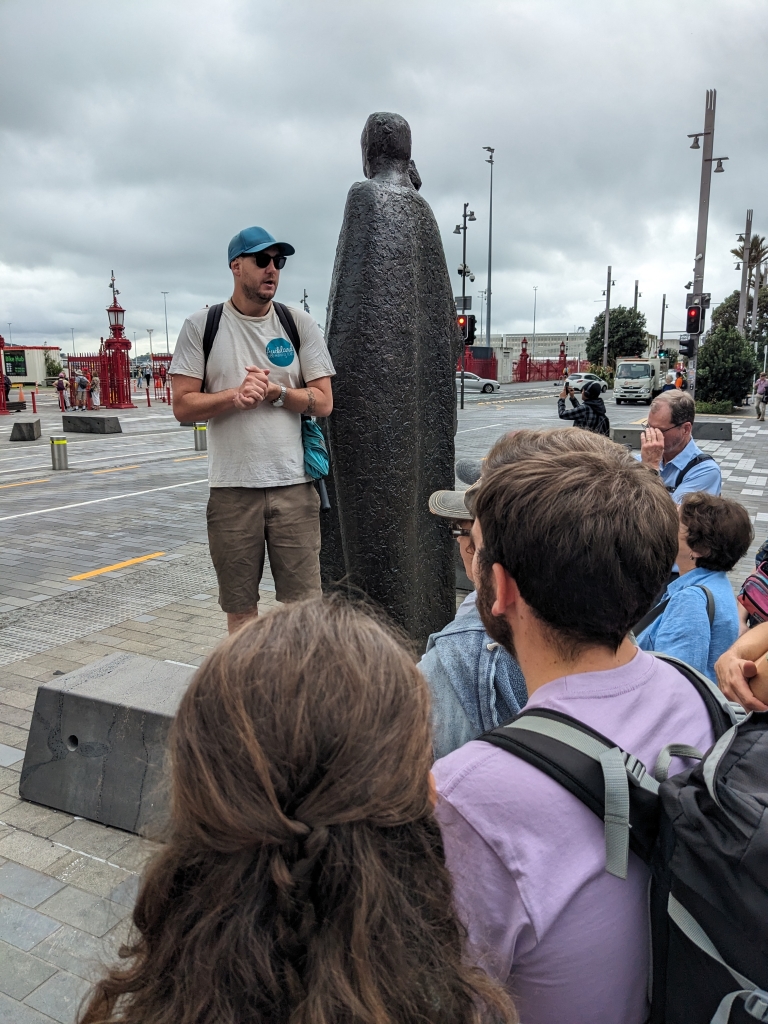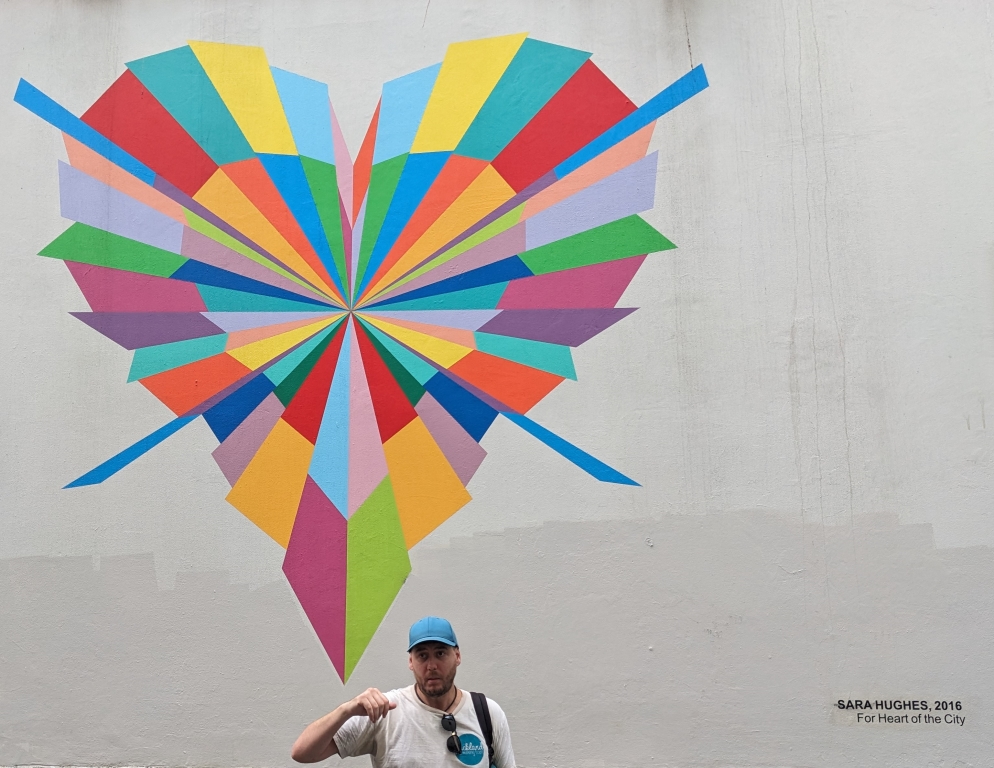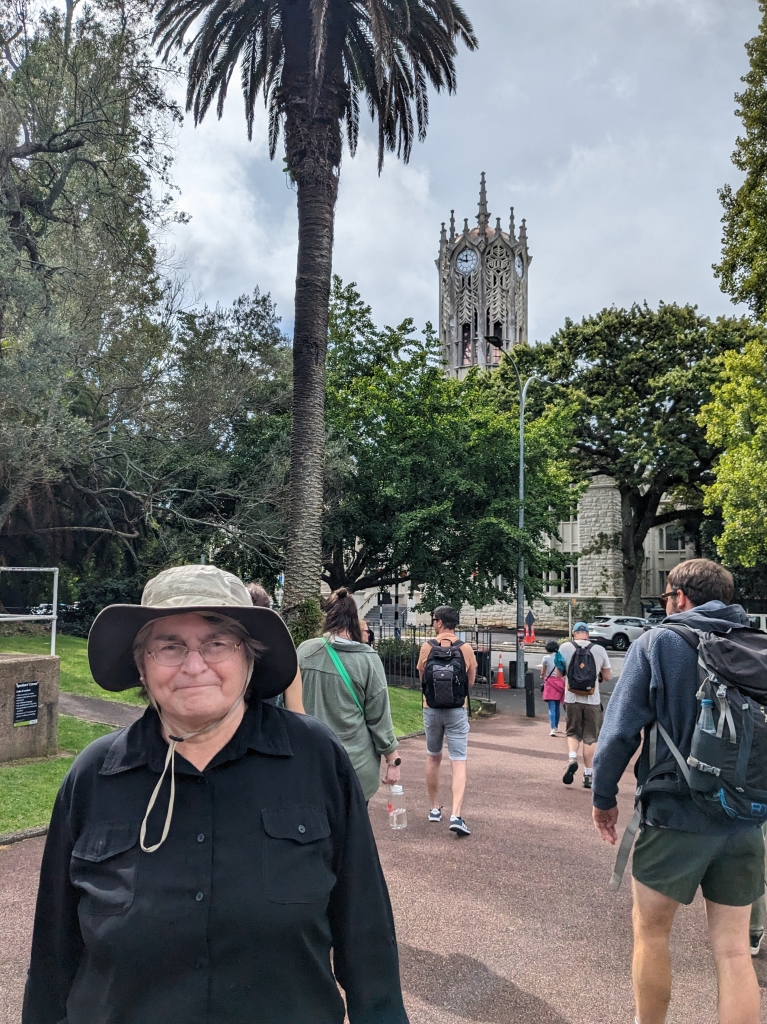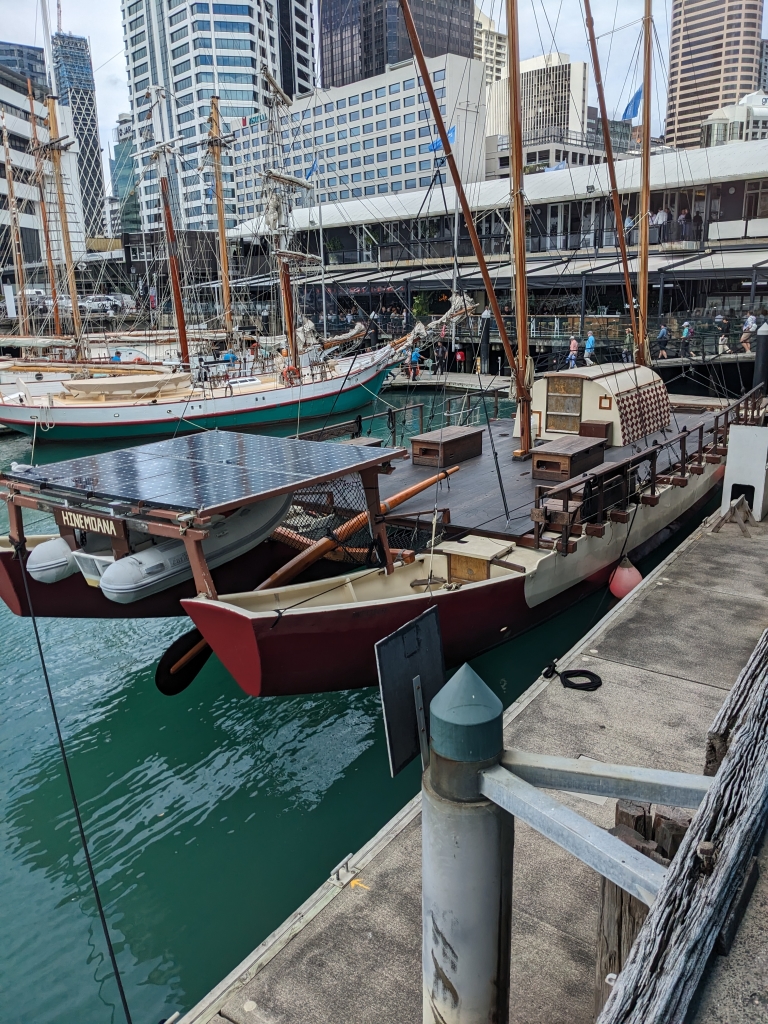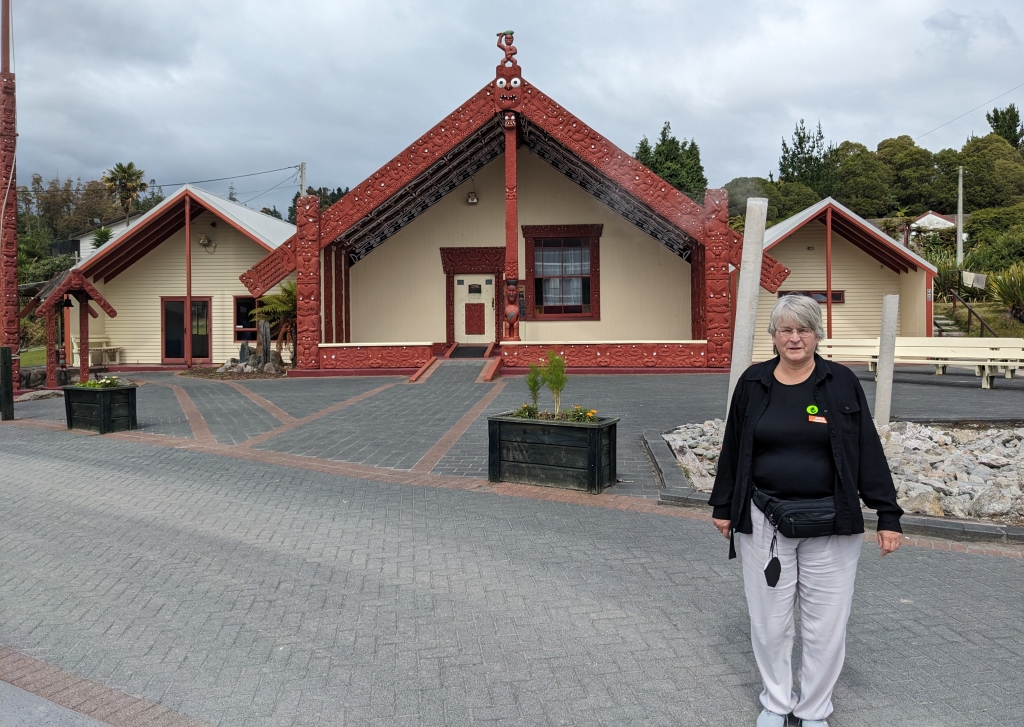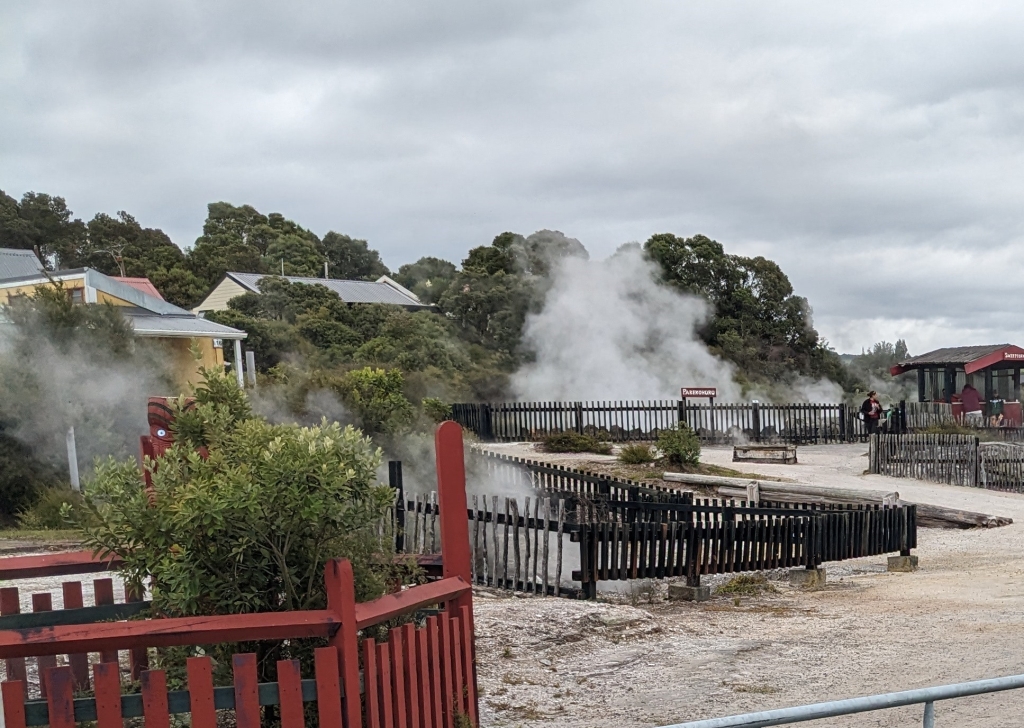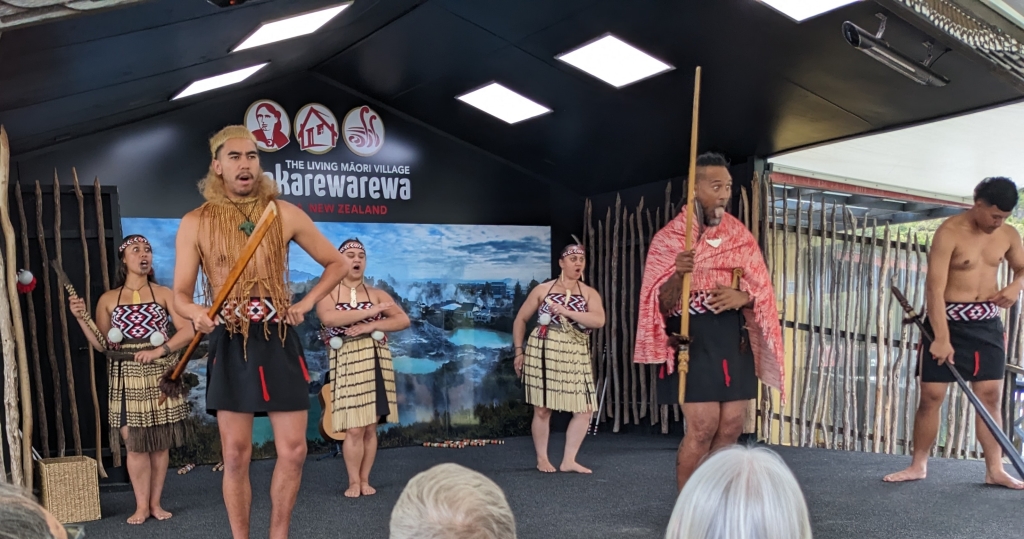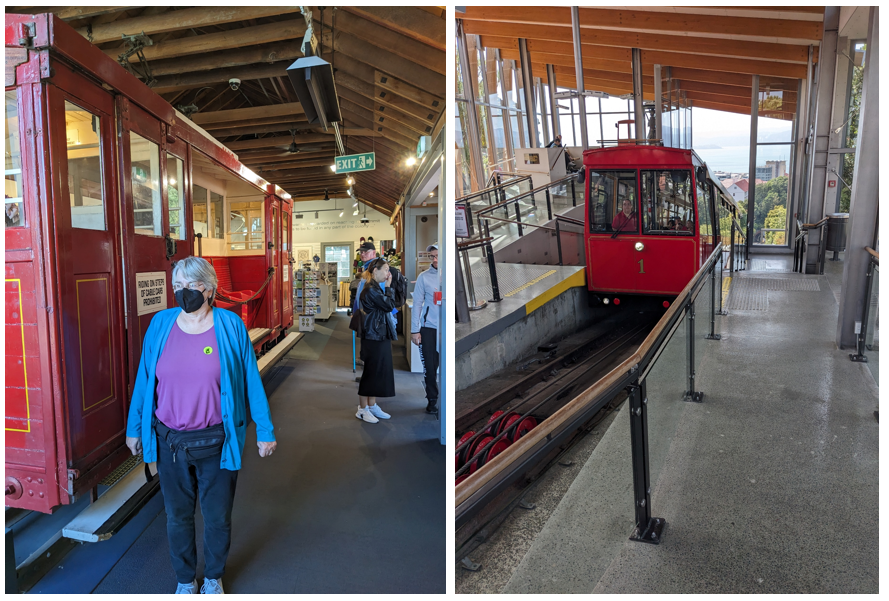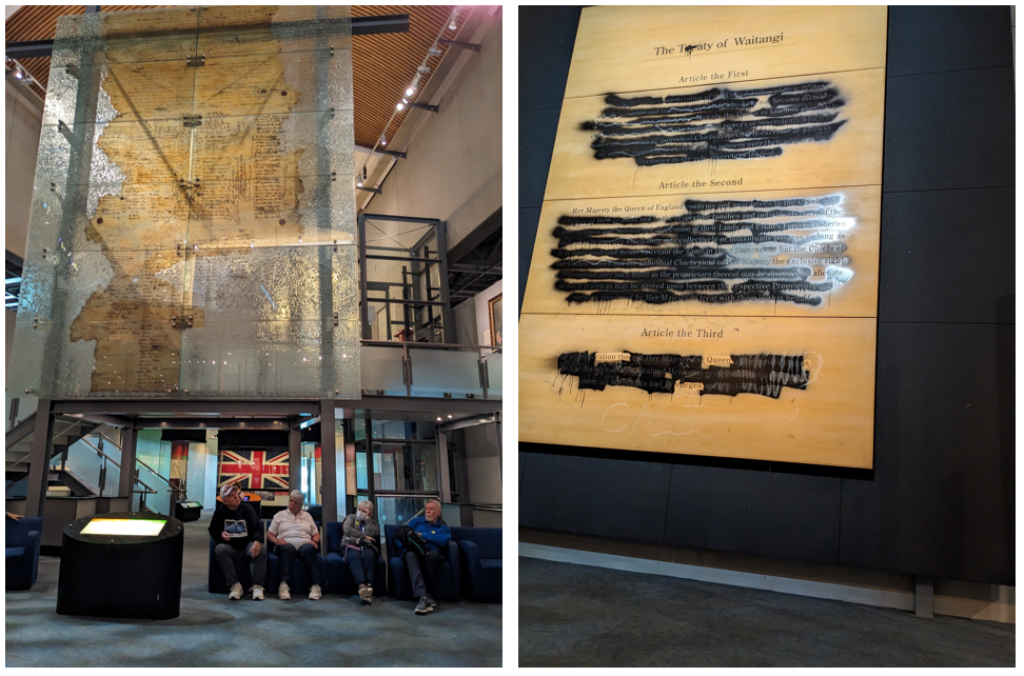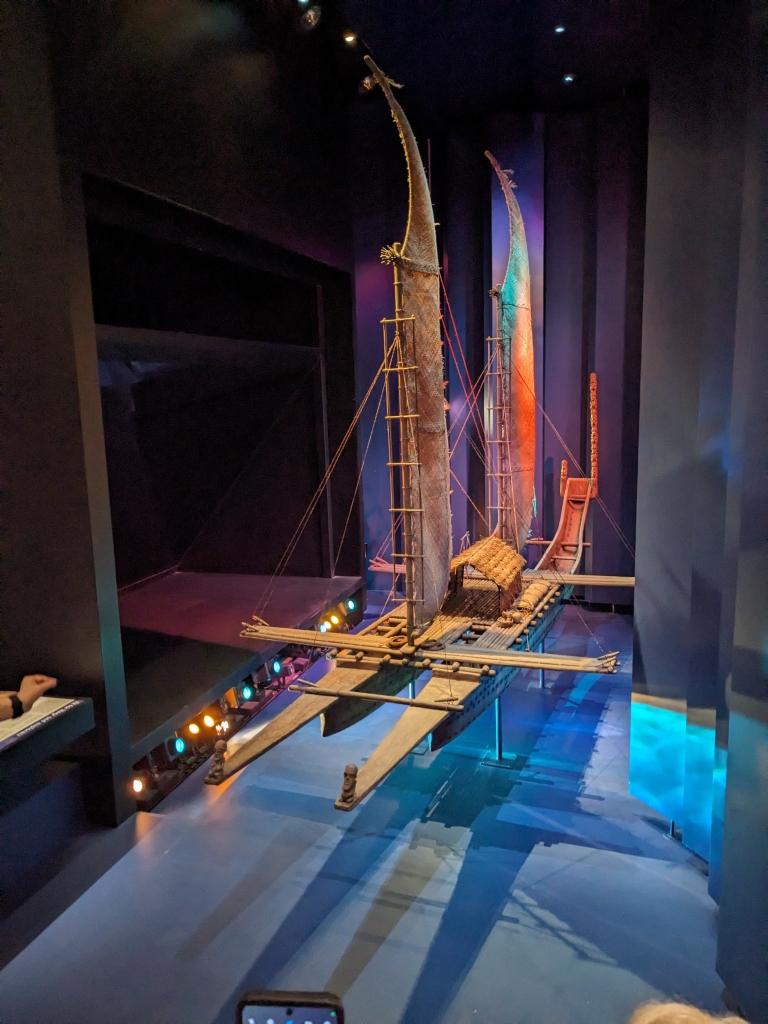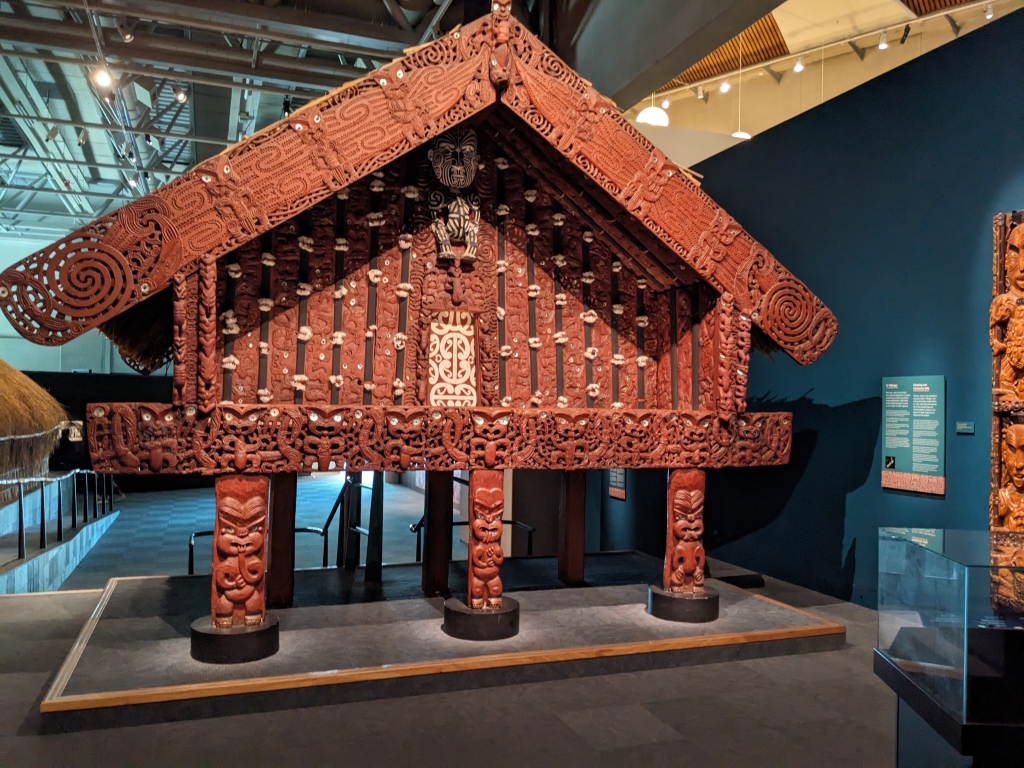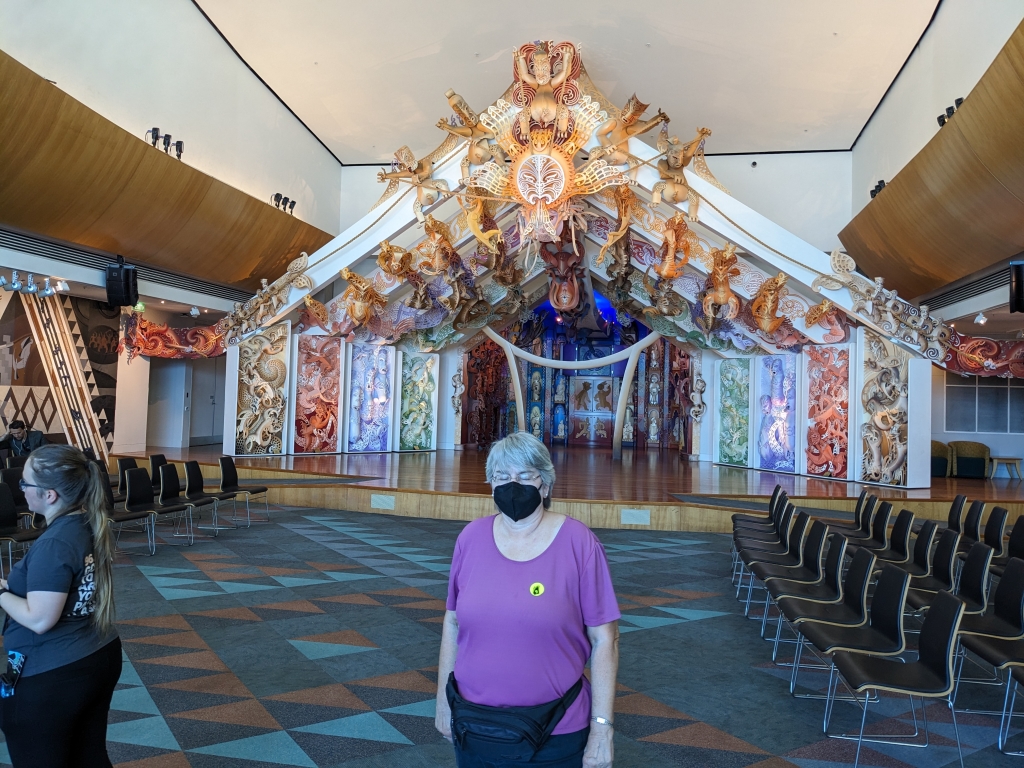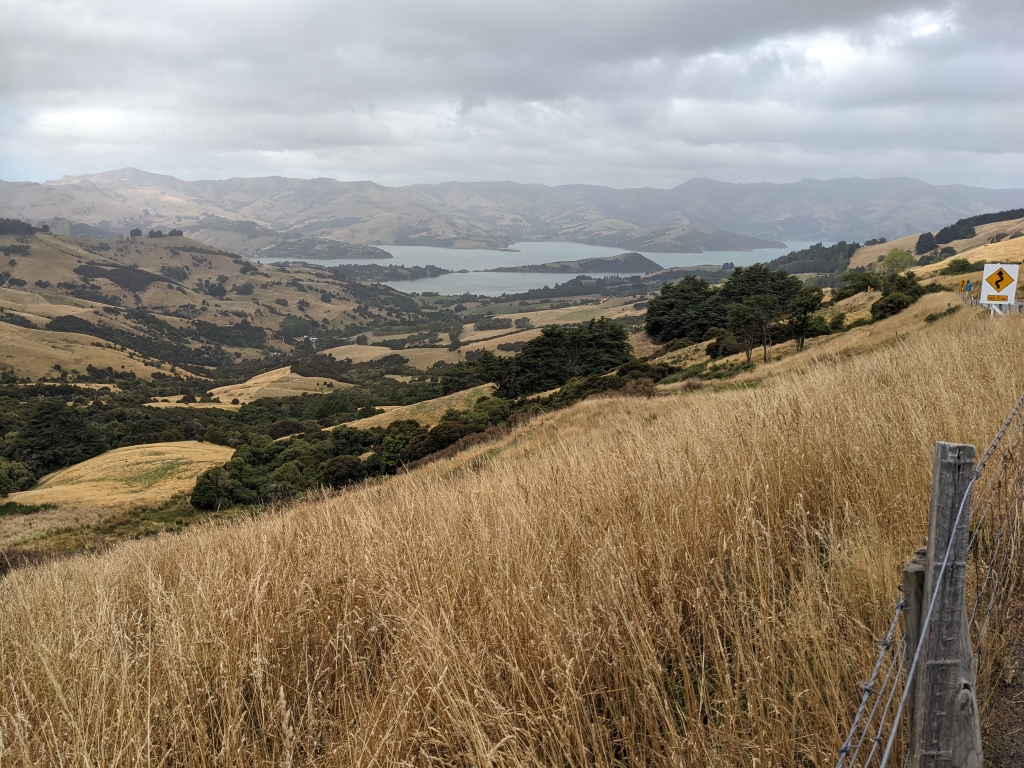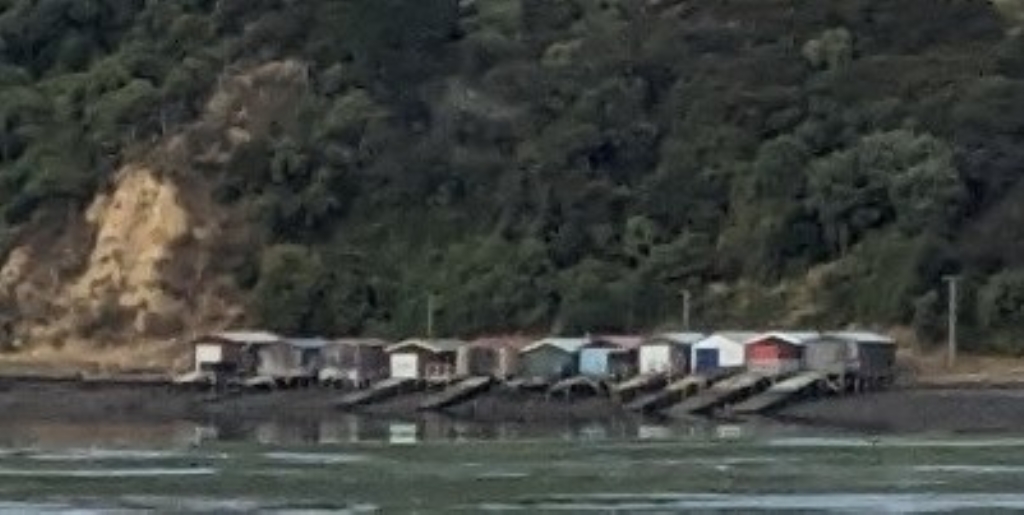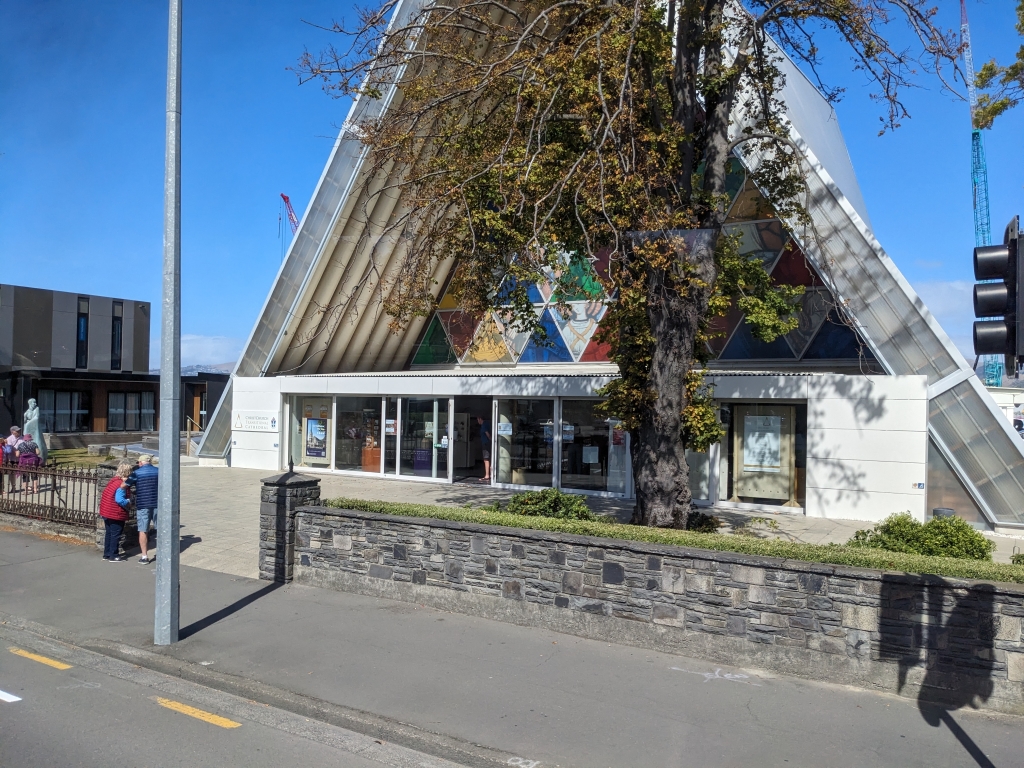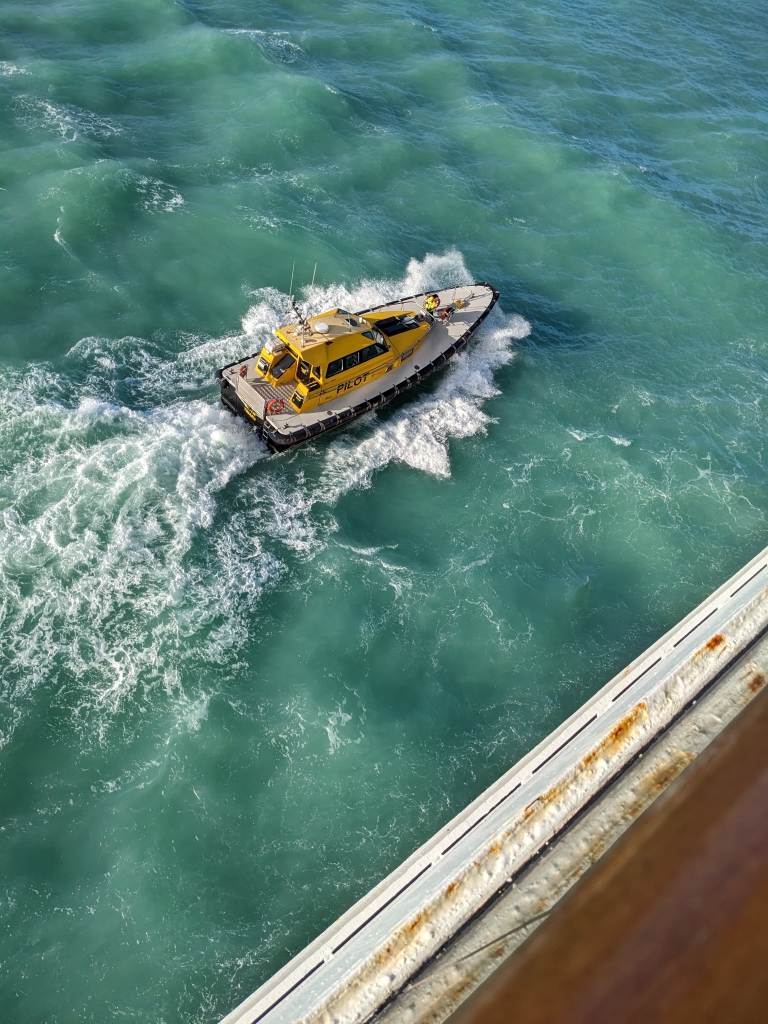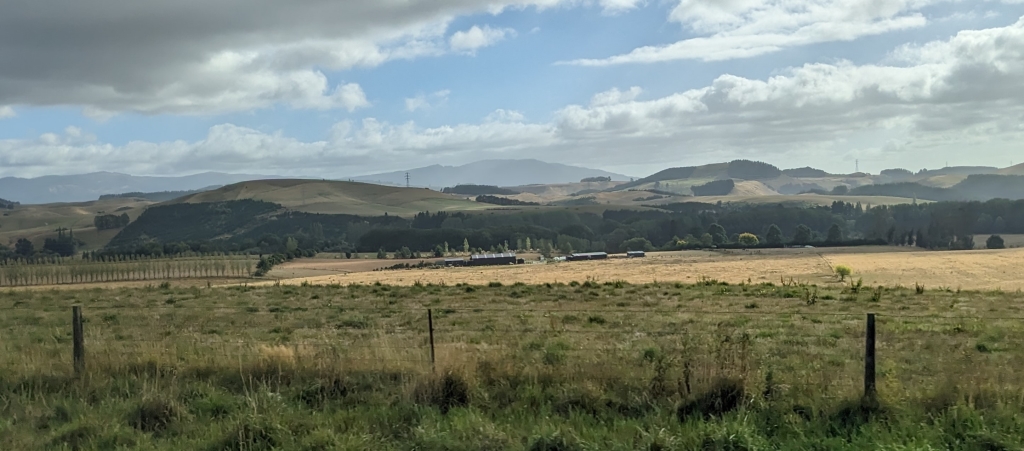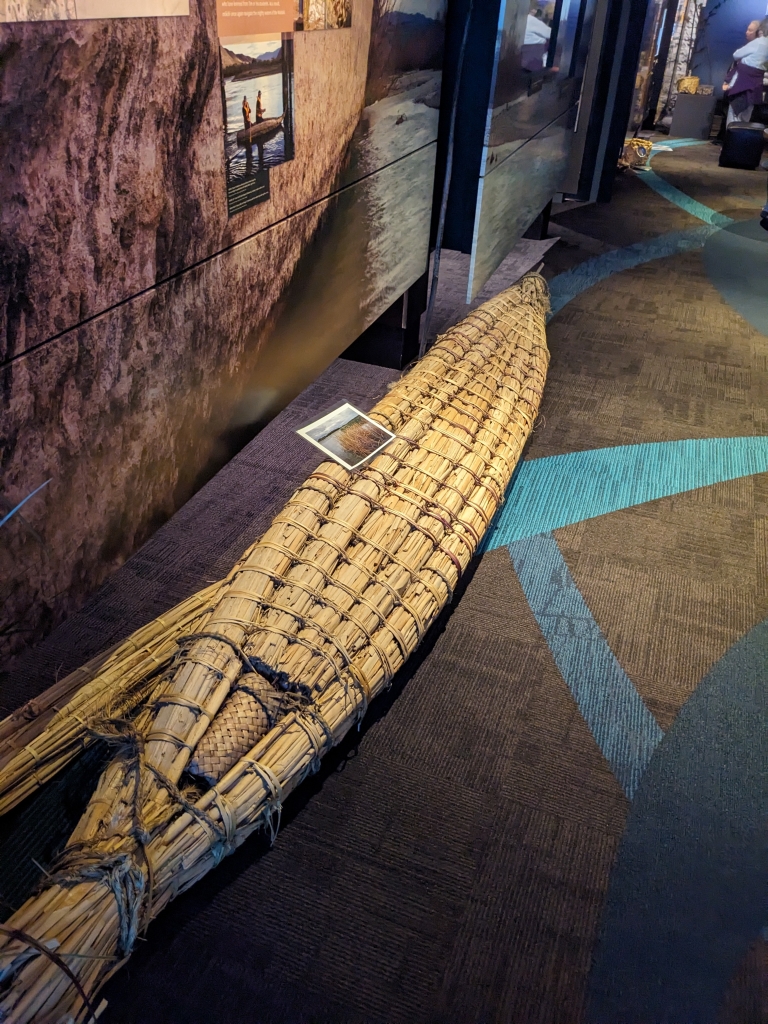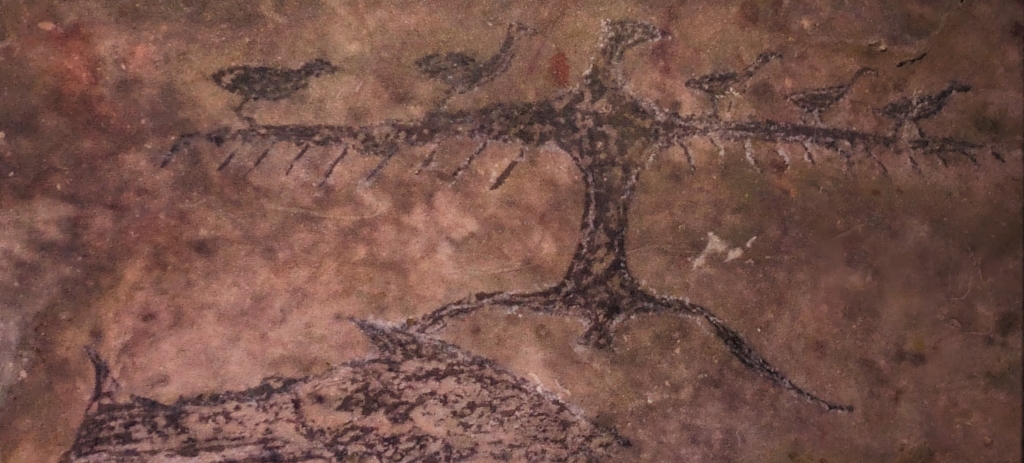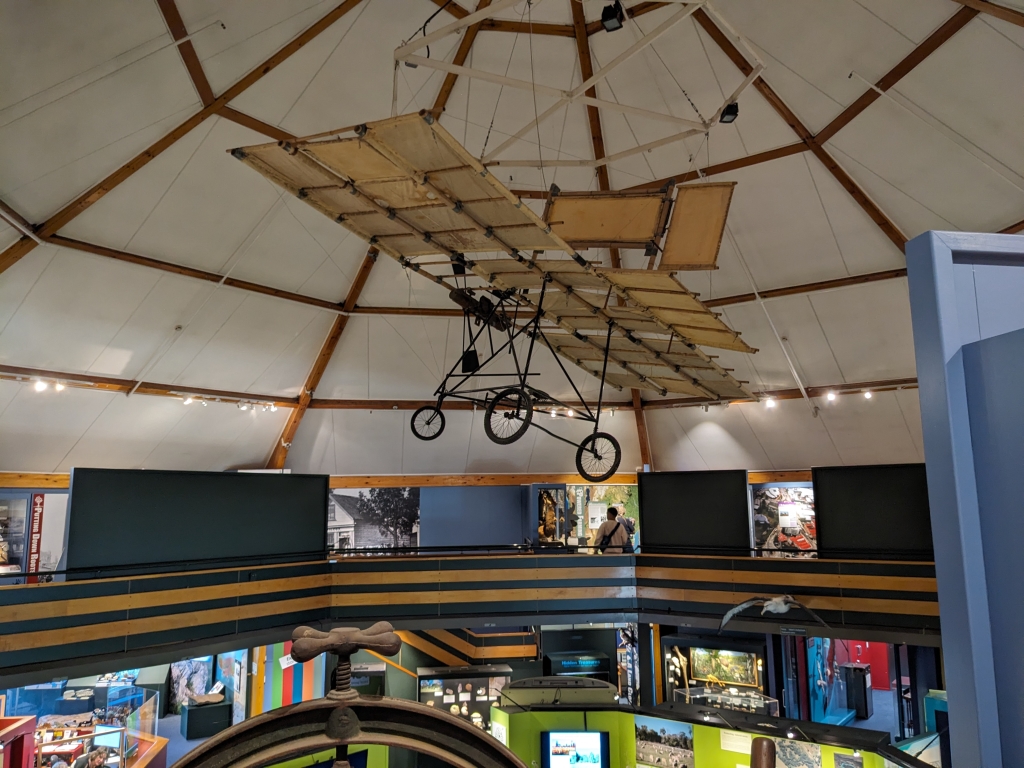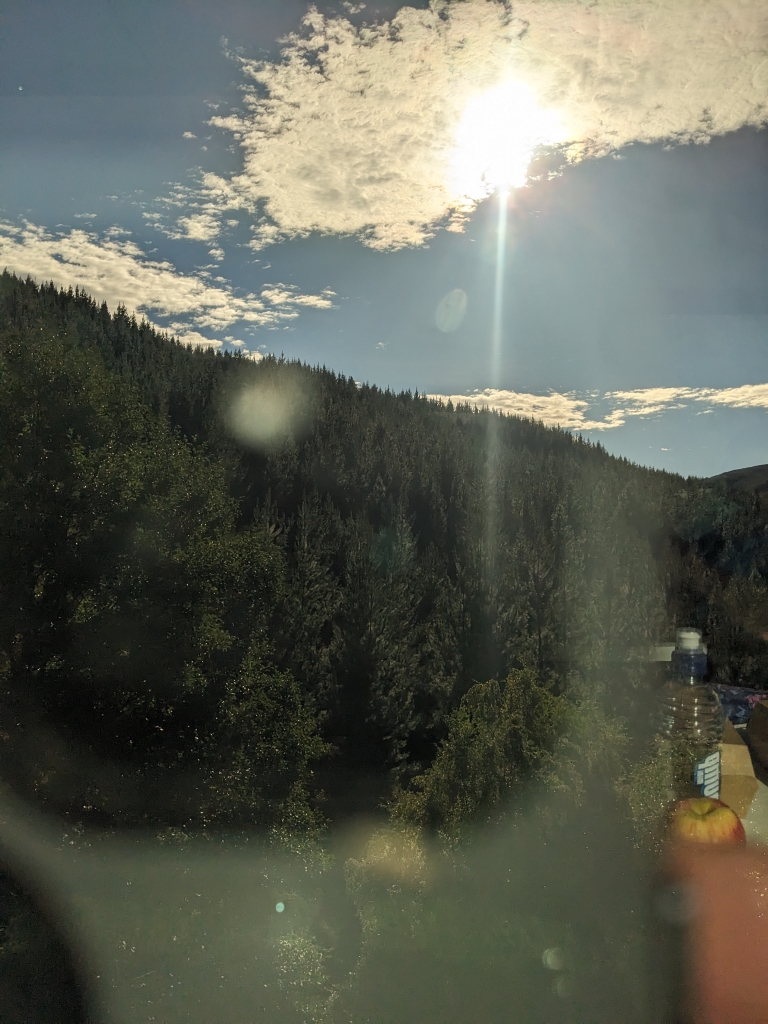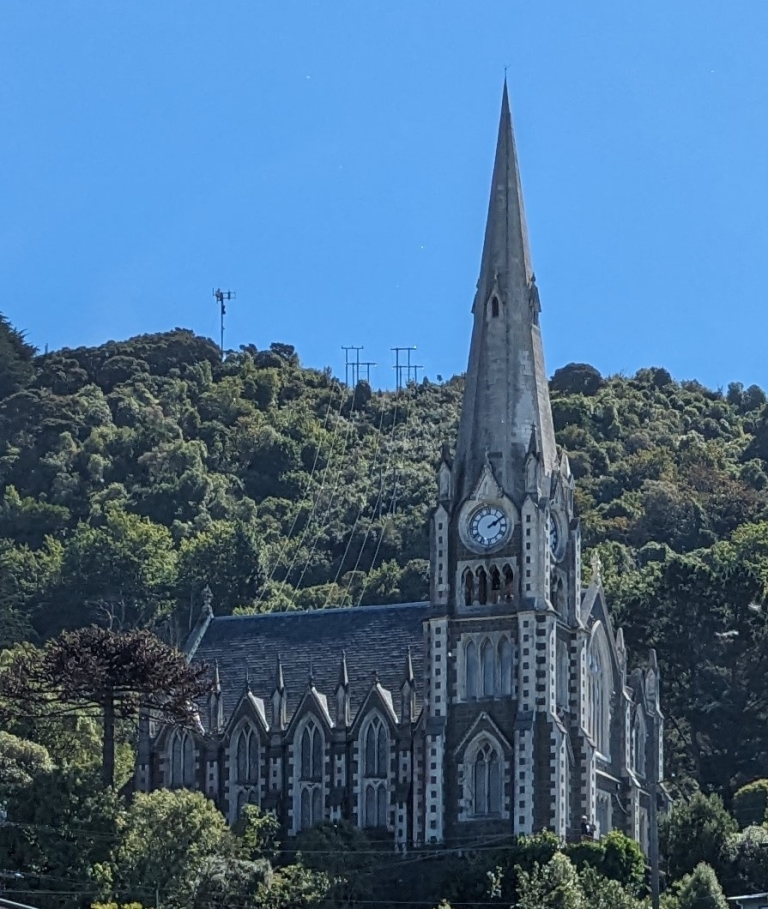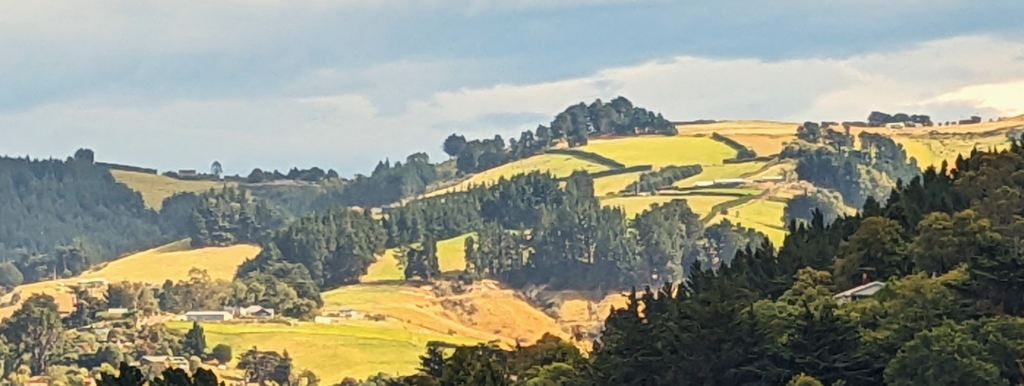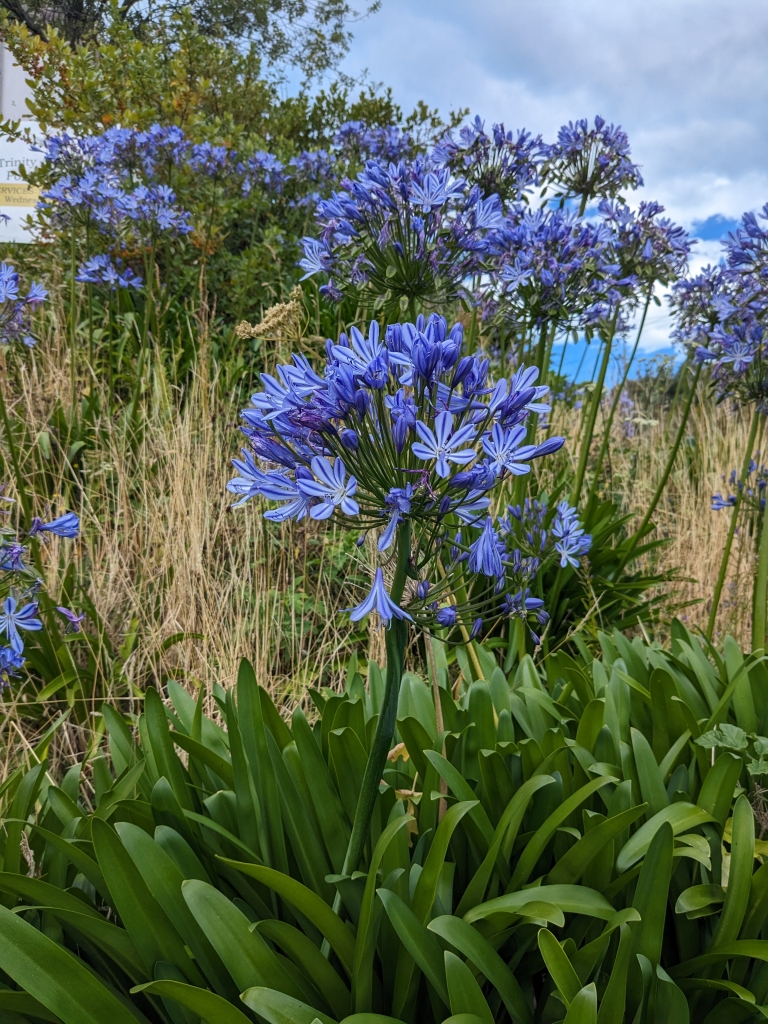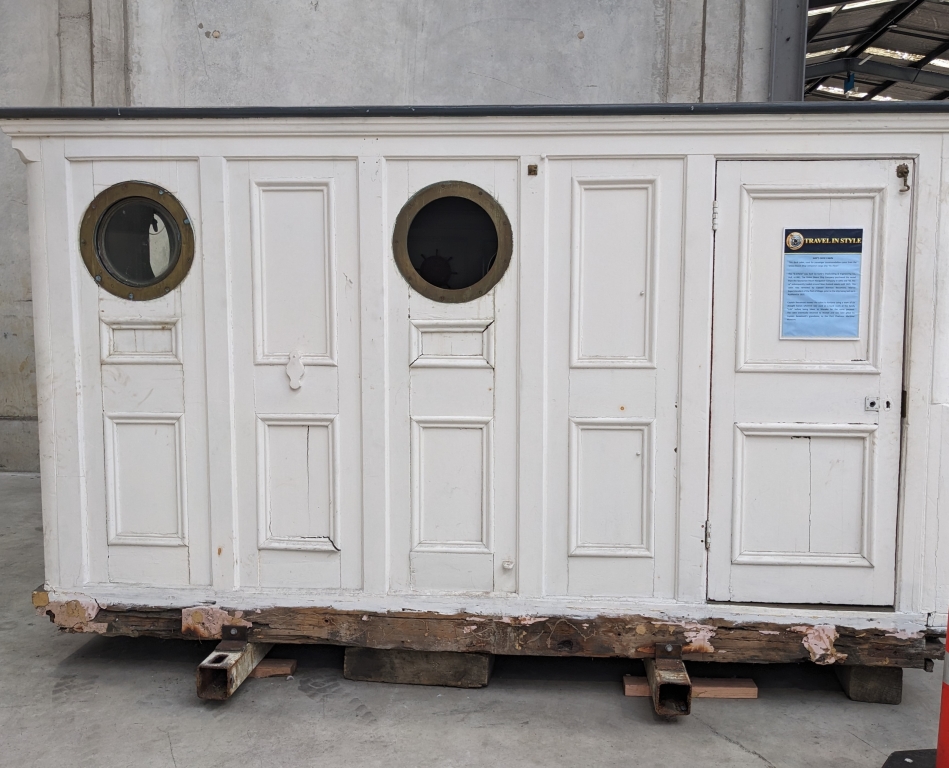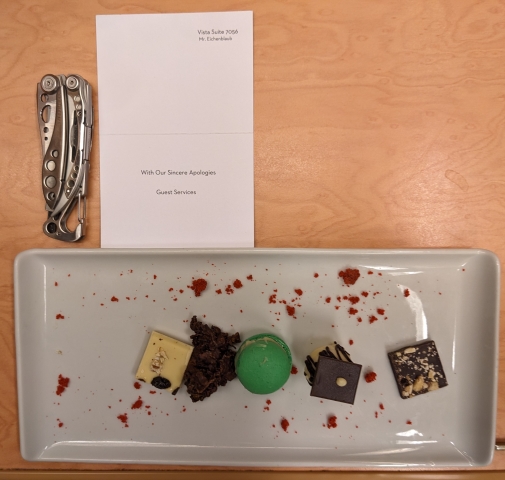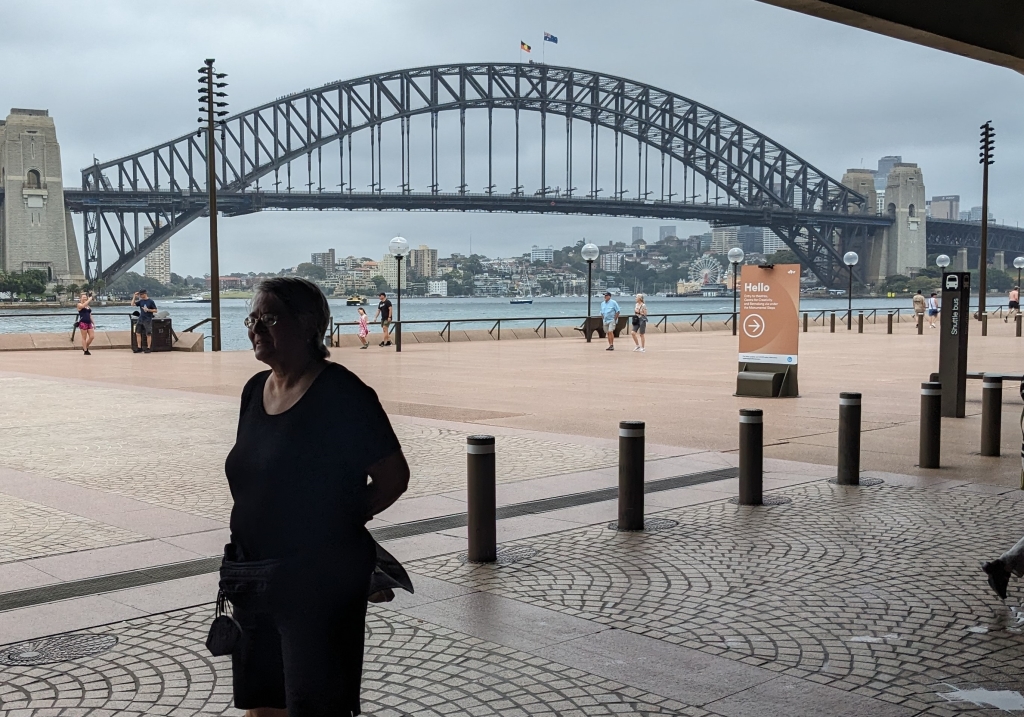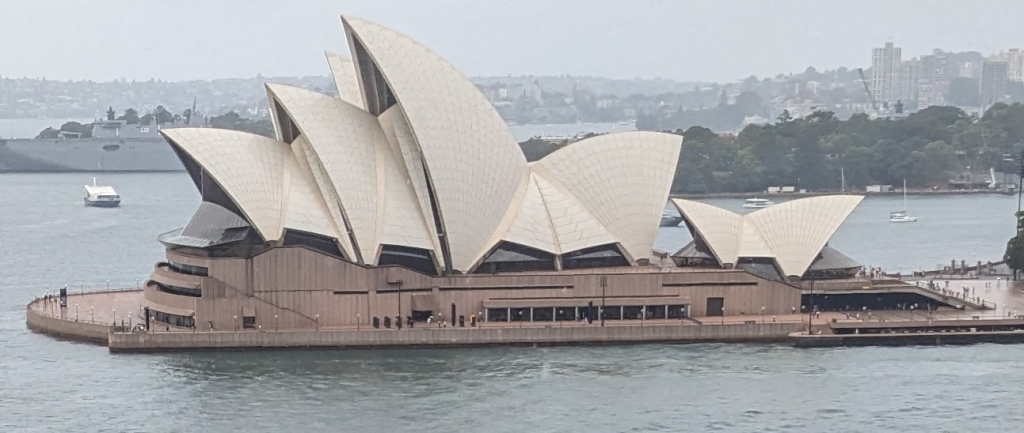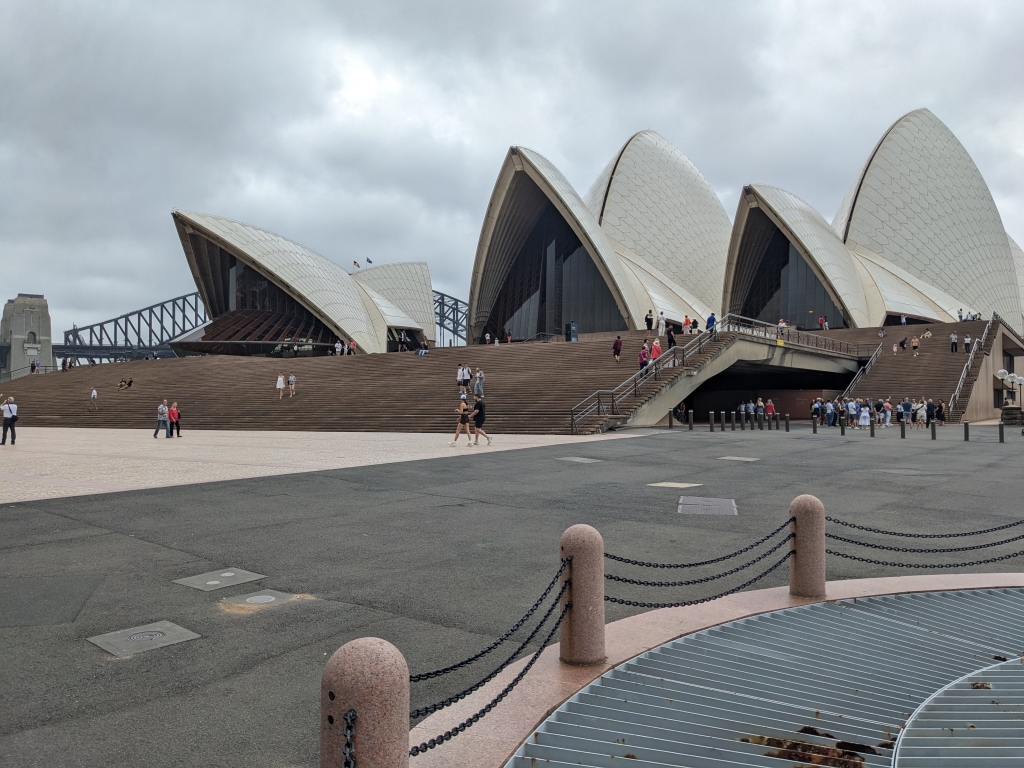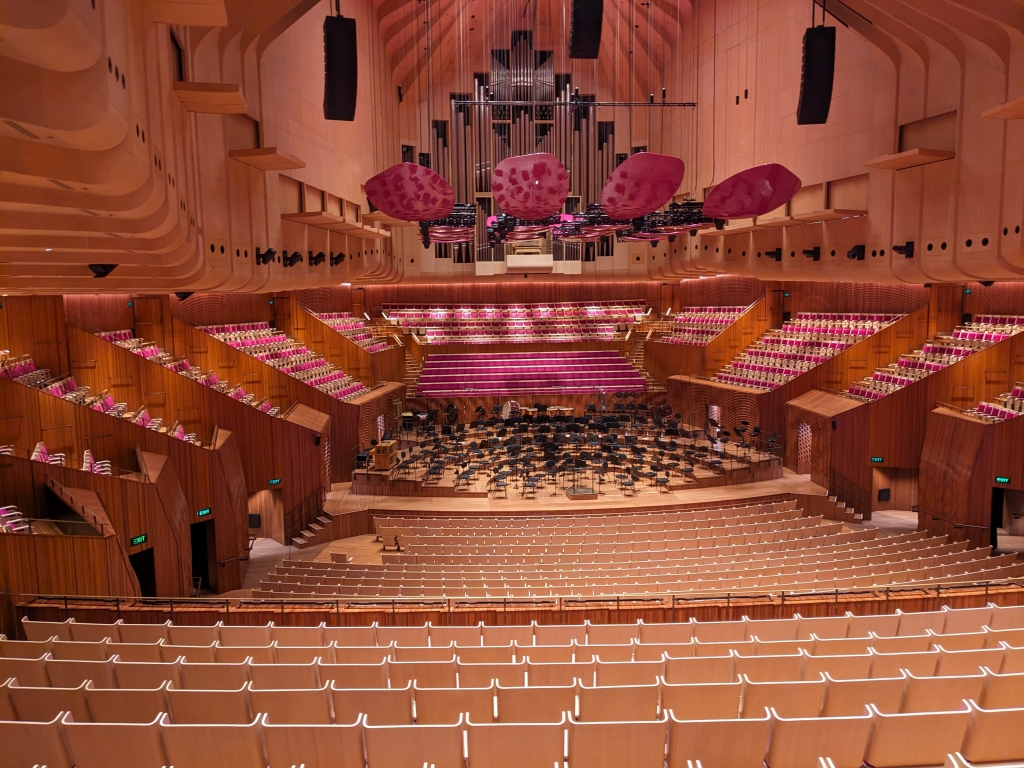We spent most of our time at the Auckland War Memorial Museum. ANZAC (Australia and New Zealand Army Corps) is a big deal for both Australia and New Zealand. Both sent troupes to fight in both world wars, and soldiers who died in both wars are memorialized. But the biggest focus is on WW I. Their troupe losses as a percentage of population were much larger than Britain’s, and most of the losses came from one battle, the battle of Gallipoli. The ANZAC forces were sent on a suicide charge against the Turks while the British were having tea.
The most poignant room for me had a Japanese Zero fighter plane. At the beginning of the war, it was the best fighting plane in the world. The Japanese lost, of course. At the very end of the war, this plane was held back for repairs. By the time the plane was repaired, the war was over. Not long ago, A Japanese man visited the museum. He was a Zero pilot. He was scheduled to go on a suicide mission, but he was held back to train the next wave of pilots. By the time the pilots were trained, the war was over. He was so taken by the Zero display that he donated his pilot memorabilia, which you see in the second picture.
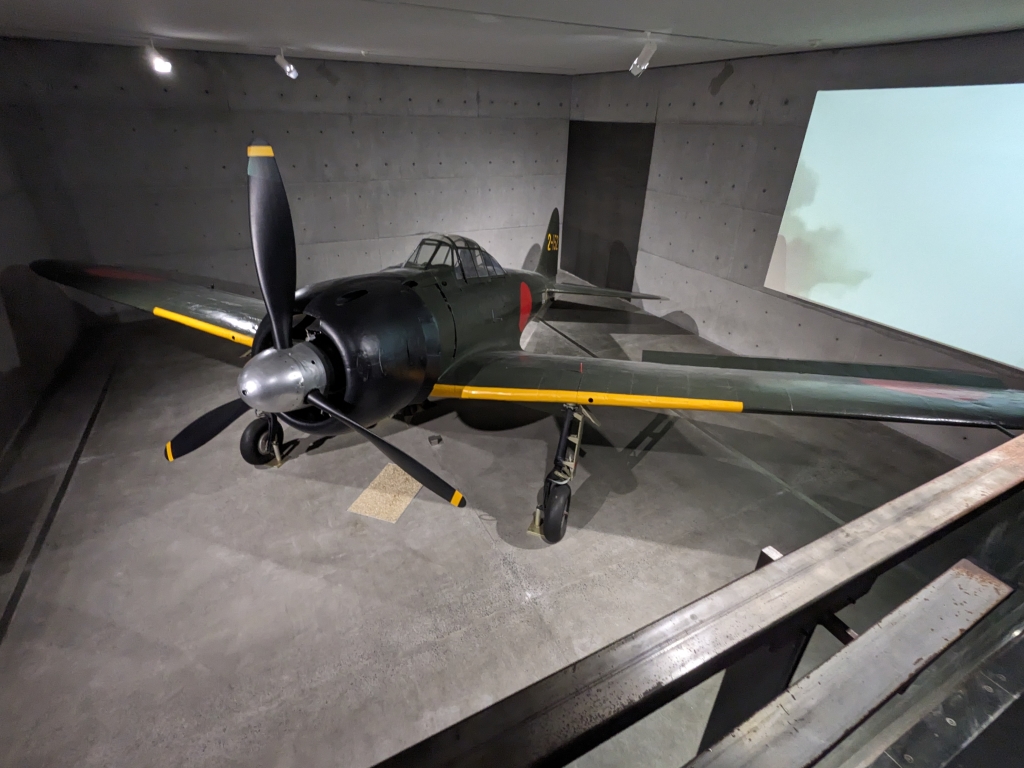
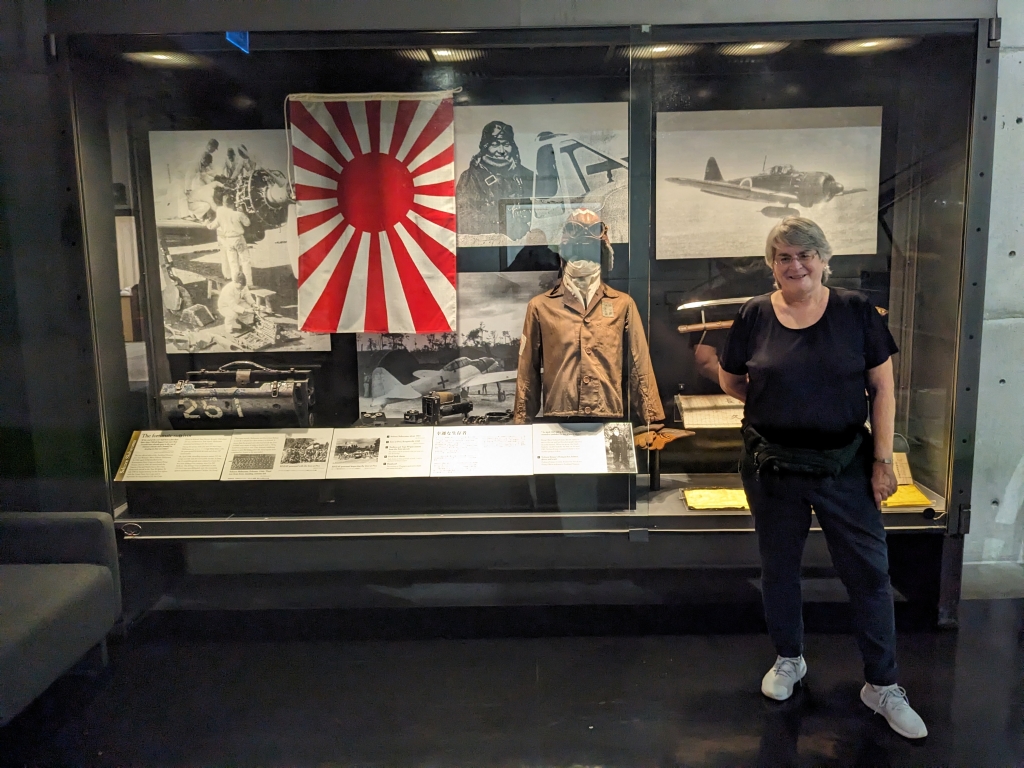
The museum displayed only two planes. The second was a Spitfire, one of the most effective planes built by the British. This plane has no extraordinary story, but it seems fitting to include it in this blog.
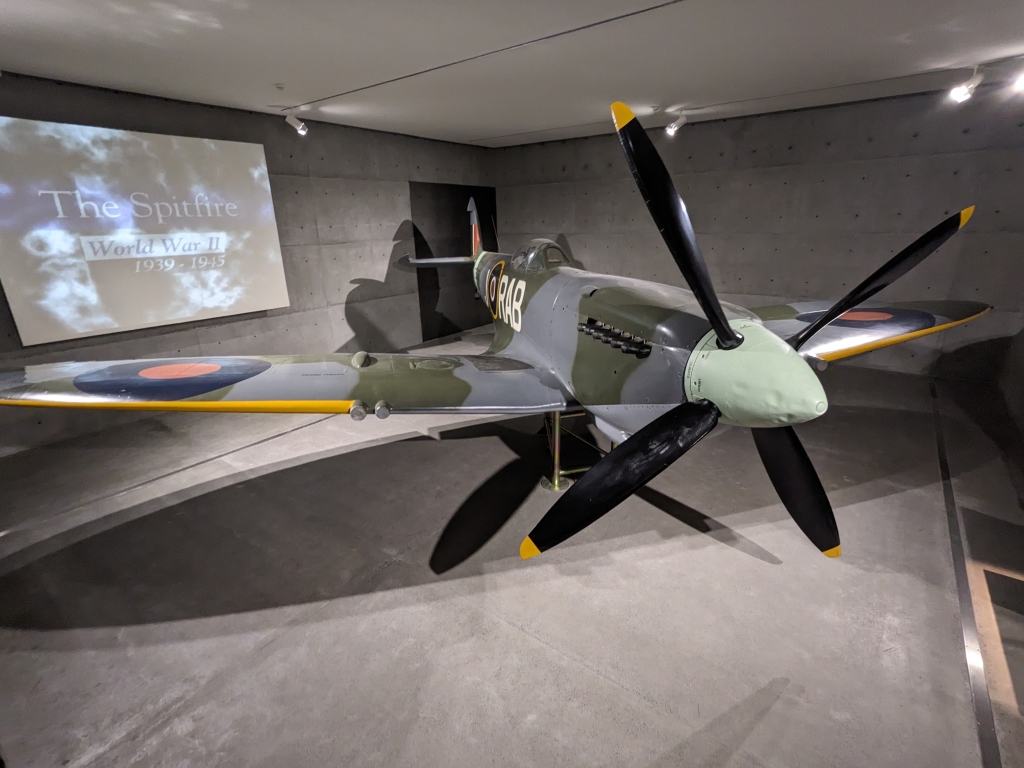
Similar to the history in the US, and Australia, and undoubtedly many other countries, there was extremely cruel and unfair treatment to the first people. Probably the worst incident in New Zealand was the attack at Ruapekapeka Pa. The Maori went deep into the bush and spent almost a year building their last stand fort. It involved many brilliant defensive measures. Eventually the British arrived. In spite of their superior weapons, it took them 10 days to overrun the fort.
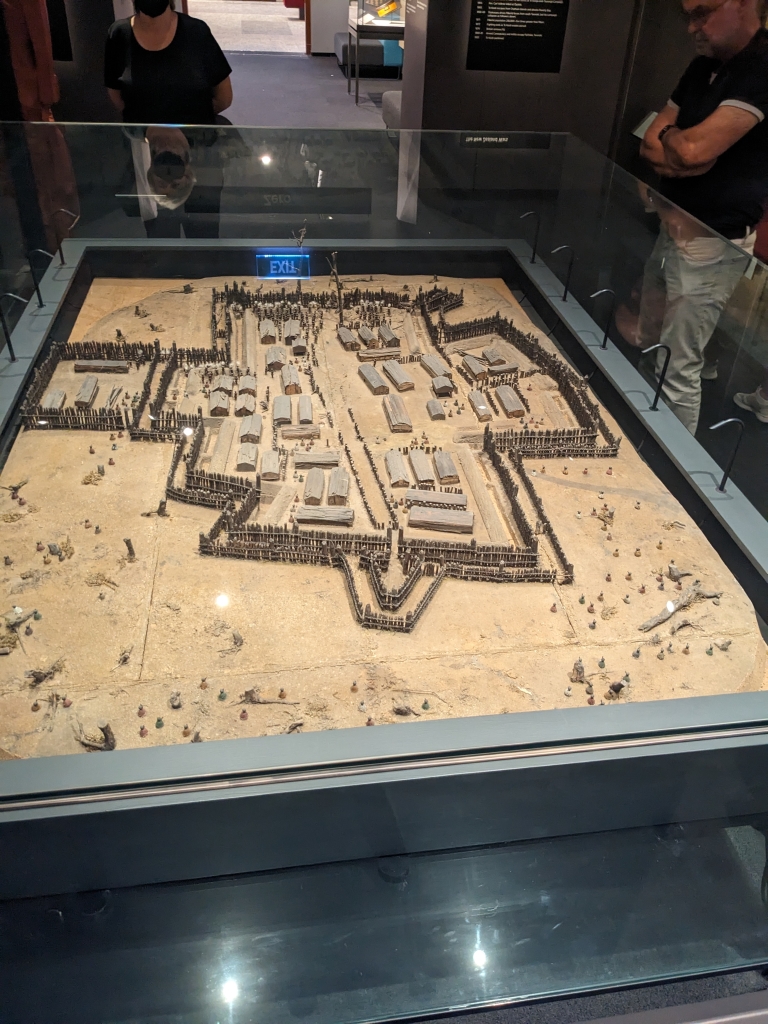
Up into the 1950s, very few people in New Zealand knew about Ruapekapeka Pa. Even many history teachers didn’t know about it. Some school girls started a partition for a day of remembrance. They delivered thousands of signatures in boxes similar to this one. It’s just a cheap box, but it is covered with a Maori pattern that represents learning. Today, schools teach a more accurate version of history.
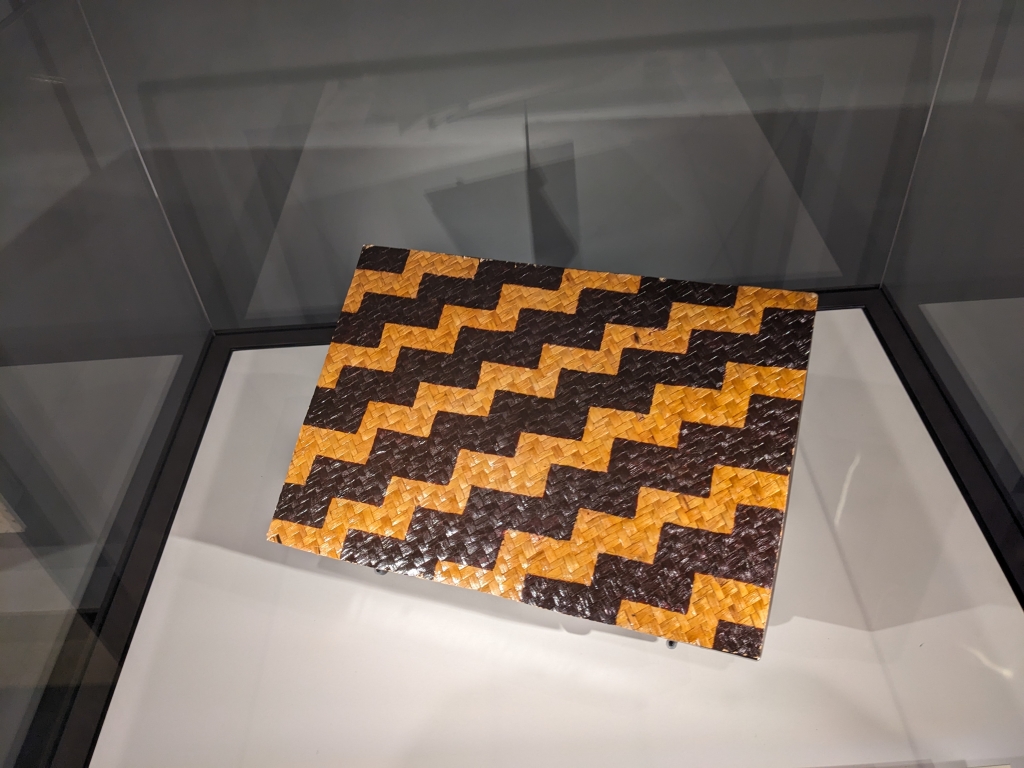
The last pic I will include is Moa bird, the biggest ever in New Zealand, and perhaps the world. Before the Maori came, there were no mammals in NZ, hence no predicters. As a result, a large number of NZ birds are flightless. Also, egg shells were much thinner than flightless birds in other parts of the world, such as the Ostridge. These birds became extinct shortly after the Maori arrived. The Maori caused the extension, but probably only indirectly. They brought with them a large rat that they used as a food source (like a guinea pig). The ratgs did well in NZ, often feasting on the easily penetrated Moa eggs.

We have one last stop in NZ, which will be tomorrow. I hope this finds everybody doing well.

